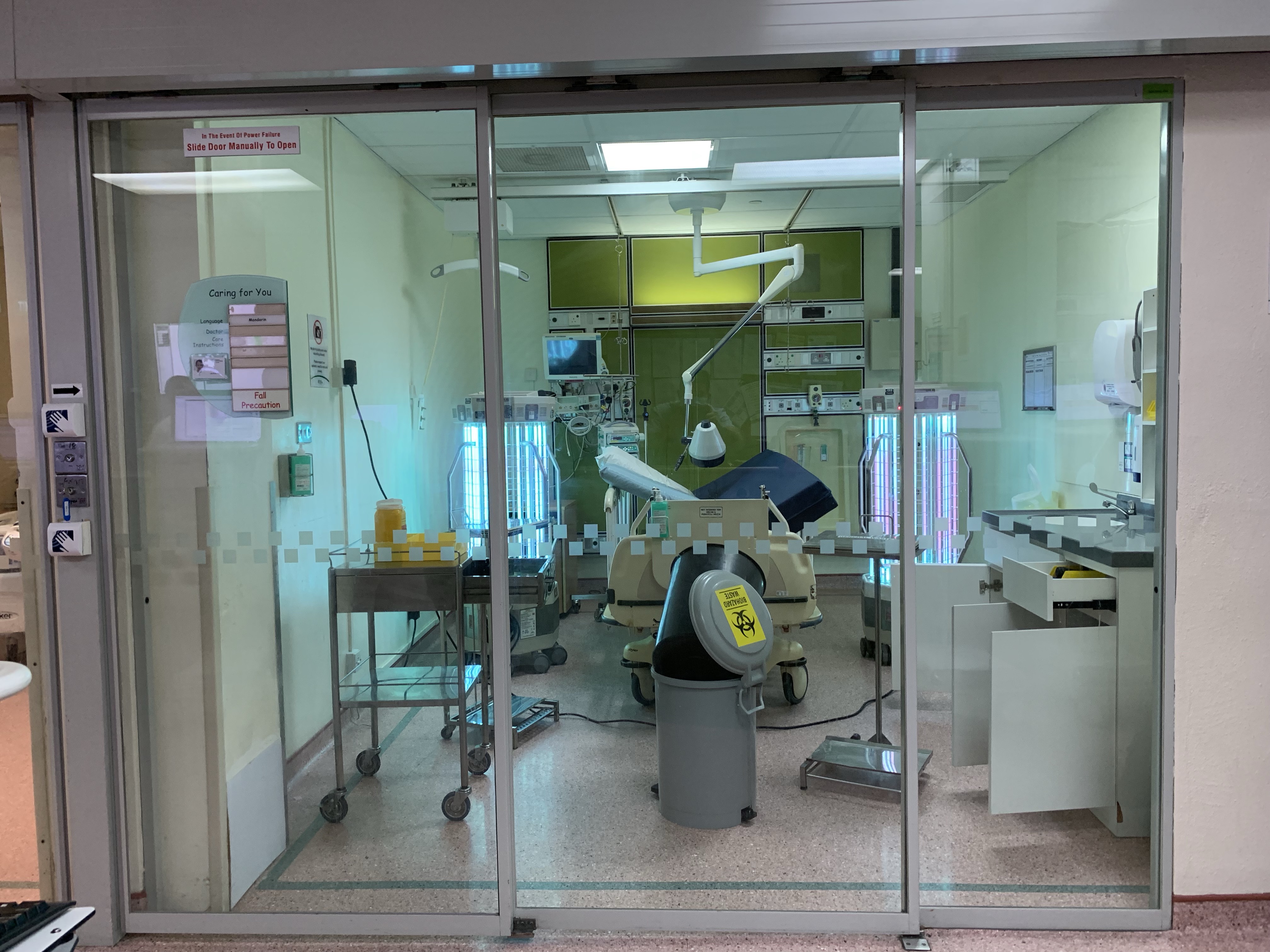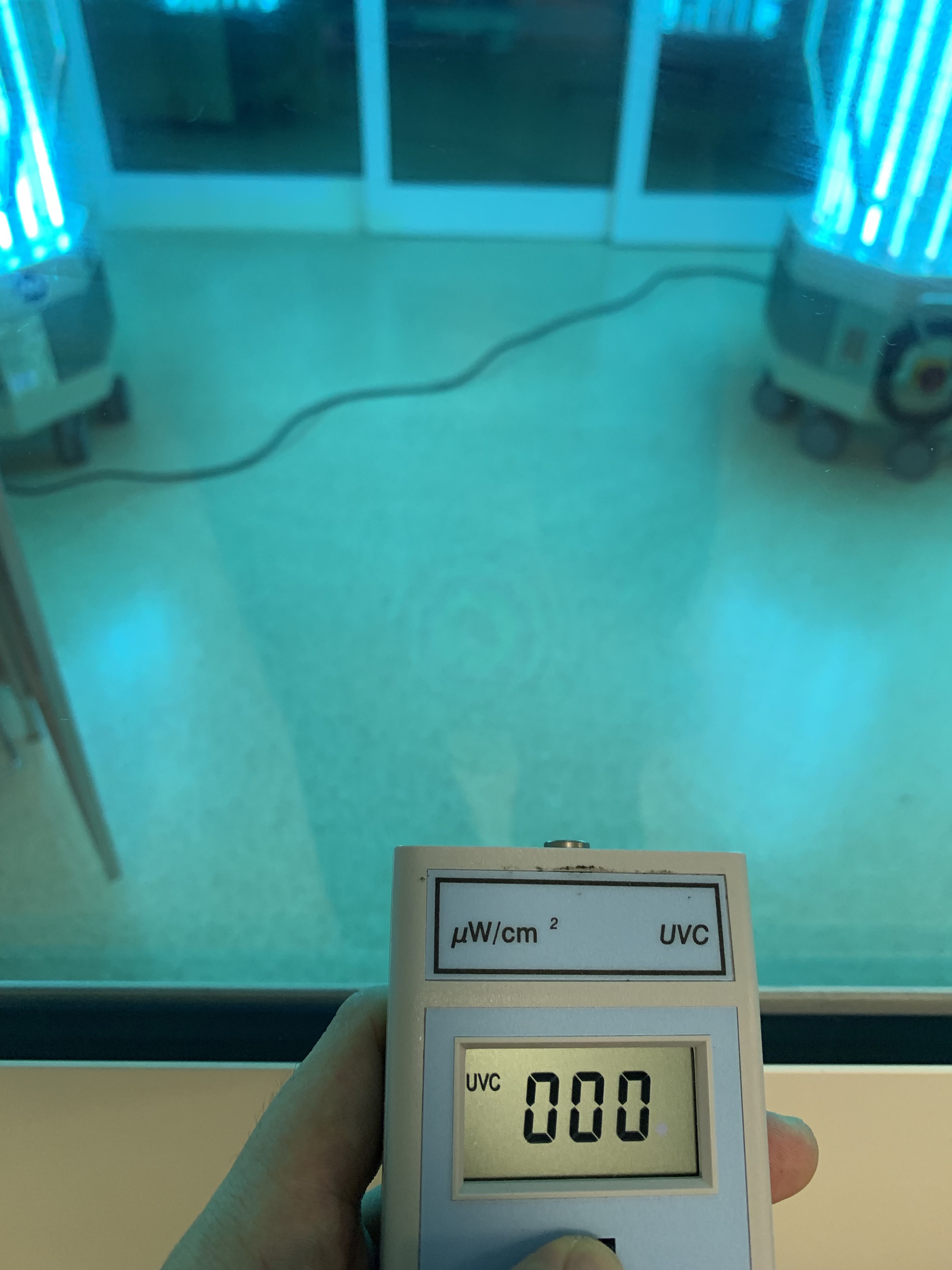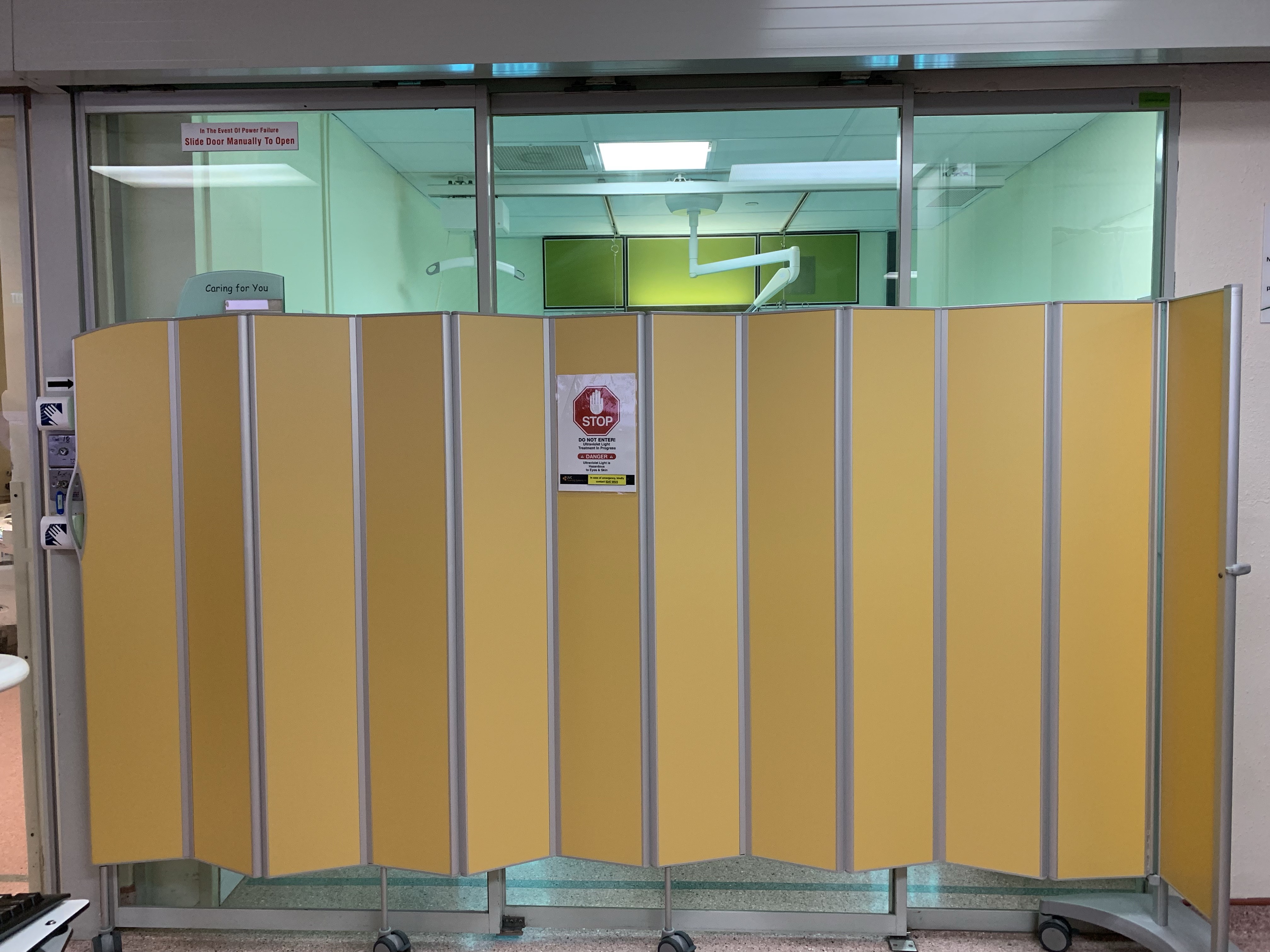Using UV-C rays to disinfect hospital rooms helps to reduce transmission of superbugs and achieve a consistent rate of decontamination.
SGH has been using UV-C cleaning machines to disinfect rooms for more than a year. “We started with 2 of them at the end of 2017. Now we have 6 to cope with the increased demand,” said Dr Ling Moi Lin, Director, Infection Prevention and Epidemiology.
“Our staff seem to think it’s a super machine that kills all pathogens. While it is true that UV-C kills all surface microorganisms, we are mindful that there is no single process that can guarantee 100% pathogen eradication.”
Uniform cleaning and consistent decontamination
That is why even though current cleaning processes are already sufficient, the UV-C is added as a secondary step to further reduce transmission of superbugs in the hospital. “Because it is by a machine, the cleaning is uniform. In this way, the use of UV-C helps us to achieve a consistent high rate of disinfection,” explained Ms Lee Ewe Choon, Deputy Director, Environmental Services.
“And it is fast! The UV-C zap is only 15 minutes,” added Dr Ling. “Our housekeeping colleagues also love it because it’s easy to use.”
I love UV-C!

Note: The screen was removed for the photoshoot.
Vincent Tran from Housekeeping has been operating the UV-C machines for a year. “After my colleague has completed the general cleaning, I would prepare the room. This includes removing the linen, opening drawers, and propping up the pillow and mattress. This is to expose all surfaces to the UV-C rays because light only travels in straight lines. Then I will roll two UV-C machines into the room, close the door, and turn on the UV-C machines via remote control. The machines will run for 15 to 20 minutes, depending on the size of the room. Once decontamination has been completed, I will roll the UV-C machines out of the room and put the room items back in their original position.”
Vincent plays a vital role in this “Specialised Decontamination Team” that comprises 4 staff. They work in pairs and operate the UV-C machines 365 days a year, targetting to decontaminate 16 single rooms from 8am to 9pm daily.
But is it safe for patients, public and staff?
In the beginning, some staff reported a burnt smell - like badly burnt BBQ chicken wings - after UV-C disinfection was completed. A check with the vendor indicated that the odour poses no health risk and is a result of the chemical reaction between UV-C and proteins in hair and dead skin cells.
To ensure that the machine was safe for our patients and staff when in use, the Office of Safety Network was roped in to evaluate the safety of UV-C machines even before we decided to implement them.
“We checked to ensure that the machine does not generate any ozone, which is a by-product of ultra violet light, because ozone at higher levels affects the respiratory system,” explained Mr David Lam, Assistant Director, Biological Safety, Office of Safety Network. “We also used a UV wavelength meter to check that the machine’s rays do not penetrate through the glass room doors, because exposure to UV light can damage your cornea and make you blind.”

As an added safety precaution, opaque screens are placed in front of the glass doors whenever a UV-C disinfection is in progress. UV light cannot pass through any solid material, so the screens further lower the risk of exposure to any scattered UV. At about 1.8m high, these screens also act a barrier to prevent patients, public and staff from getting close to the doors and peeping through any incidental gaps.

Future plans for the UV-C machines
Currently, UV-C machines are used in single rooms such as the isolation ward for patients with multi-drug resistant organisms (MDRO) infections, in transplant rooms, as well as ICU rooms with MDRO cases, and in the operating theatres at night after all the operations are over.
Dr Ling shared, “Now we have 6 machines, but we still need more. We will also be using them in our new buildings such as the upcoming Outram Community Hospital and Emergency Medicine building.”
We love mail! Drop us a note at lighternotes@sgh.com.sg to tell us what you like or didn’t like about this story, and what you would like to see more of in LighterNotes.
